What is a great curriculum?

In this era of technological revolution, how should a school curriculum be designed to equip today's students to become the torchbearers of tomorrow's nation-building? Two academic veterans examine the dos and don'ts of modern-day curricula in the fifth part of a series that focuses on some of the most fundamental issues of higher education in Bangladesh. The Daily Star welcomes and encourages any and all thoughts, ideas, and recommendations on these issues from our respected readers.
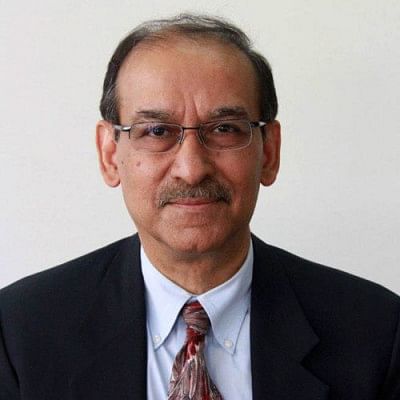
A great curriculum is intended to shape human capacities by delivering quality education in sync with the times. It contributes significantly to an academic institution's identity and reputation, bringing to life the institution's essence and purpose. In combination with good students, great teachers, sufficient resources, creative governance, stakeholder involvement, and far-sighted leadership, the curriculum influences what, where, and how students learn. In its larger ambit, from the institution to the nation, its role in nation-building is undisputed.
A well-designed curriculum involves a complex web of considerations: national policy guidelines; community needs (including employers); mission and vision of the institution(s); learning styles (adult learning can be subject-based, process-based or problem-based); nature of the subject matter; institutional resources (budgets, state-of-the art facilities, technology, opportunities for upskilling, etc); and support services (e.g. links to industry for internships, guidance and counselling programmes, etc). The complex connections among these elements must be aptly harmonised for a curriculum to be effective for students, institution(s), and community.
A good curriculum must be examined relentlessly on its design, seeking to constantly improve on five dimensions:
Goals are the expectations concerning learning and teaching and must at least:
* Specify the end goal, with clear learning objectives across the programme.
* Support learners' ability to learn with the right balance of rigour.
* Prepare learners for life with unique skills, interest, attitudes, and values.
* Build learning experience in a pyramid fashion, each level building on previous levels.
* Be flexible and enable monitoring and evaluation by administration.
* Consider the theories of learning relevant to each field of study and the range of learning styles.
Methods concern the instructional approaches and procedures to reach and engage students inside and outside the classroom to facilitate learning. The right blend of methods – i.e. pedagogy or andragogy – can run the gamut: from lectures, peer instruction, flipped classrooms, minute papers, developing concept maps, case studies, hands-on research projects, team-based learning to problem-solving and much more. Today's lecture-based classrooms, dreary and uninspiring to the core, represent an antiquated era.
Materials are the tools combined with methods to achieve the goals of the curriculum. Books, journal articles, laboratories, cases, media reports, web sources, and a plethora of materials are available to enrich the curriculum. If computer labs are ill-equipped or a geography teacher lacks multimedia to take students to the various corners of the world, learning is diminished. Budgets in our academic institutions often fail to provide the right materials and constrain the inquisitive mind.
A vibrant curriculum feeds into more detailed activities: sequencing the subject matter for best possible alignment, training teachers to deliver the curriculum, preparing an effective syllabus for each course, developing clear learning outcomes for effective assessment (both formative and summative), developing rubrics, and providing effective feedback to students. With online/hybrid learning and emerging educational technology playing an increasing role in higher education, attention to the curriculum is a sine qua non.
Innovative linkages within a programme (architecture students converting rooftops into gardens or water reservoirs) or between programmes (using art to treat mental health or the creation of biomedical engineering) must be constantly explored, seeking synergy and to vivify the curriculum.
Assessment is an ongoing process to determine what the student knows, understands, and can do with their knowledge and skills. Information from assessment is used to adjust instructional approaches, teaching materials, and academic support programmes. Some programmes are considering eliminating summative assessment without clearly understanding its ramifications.
It needs emphasis that if the curriculum is ill-designed, purposeless, disjointed, and repetitive, it will encumber one's education. I recall seeing a university offering three levels of an introductory course, adding credit hours (seemingly) to earn revenues! No student or parent complained, nor did any regulatory body intervene to look into this anomaly. A poor curriculum is "a recipe for academic disaster." It is particularly dire when institutions download programmes of study from institutions abroad without considering their fit with and the needs of various stakeholders (students, teachers, employers, planners, etc), whether resources are available to match the demands of the curriculum, whether it can be competently delivered, and whether the quality of the student intake will be capable of absorbing the material.
A vibrant curriculum feeds into more detailed activities: sequencing the subject matter for best possible alignment, training teachers to deliver the curriculum, preparing an effective syllabus for each course, developing clear learning outcomes for effective assessment (both formative and summative), developing rubrics, and providing effective feedback to students. With online/hybrid learning and emerging educational technology playing an increasing role in higher education, attention to the curriculum is a sine qua non.
A curriculum should be reviewed regularly to meet the needs of learners as well as society. In fact, a good curriculum should be developed democratically, although it can pose challenges – e.g. whether Darwin should be taught in class at all. Times change, circumstances change, curricula should, too.
Importantly, academic institutions must demonstrate courage by introducing new thinking into the curriculum. For example, engineering students should be able to design and build a prototype in their field at the end of their academic career, instead of just passing exams. Sociology students may design social change programmes. Harmonising cross-disciplinary programmes of study such as engineering and sociology for poverty reduction can go a long way in transforming academia to becoming more innovative and relevant.
Curriculums across the world are being reassessed today. A colleague at Oxford worries, "Universities have lost their original purposes – to give a broad education and make useful citizens of its students as well as providing research into life concerns." Unfortunately, many institutions have turned into job training and specialist trade schools while teaching little else. It's time we refocus on what, where, and how students learn, and their competencies, attitudes, behaviours, and worldview we need to develop, consistent with a fulfilling, tolerant, industrious, and kind society. With stakeholder participation, a vibrant curriculum can be truly transformative.
Dr Syed Saad Andaleeb is distinguished professor emeritus at Pennsylvania State University in the US, former faculty member of the IBA, Dhaka University, and former vice-chancellor of Brac University.
***

Despite being almost ubiquitous in discussions on education, the term "curriculum" is quite often used, even by educators, incorrectly and is not infrequently referred to just as a "routine" or a "schedule" of activities for students. Curriculum, however, is a much broader concept, and aside from considering all the relevant components of learning and skill-developing activities, it must and generally does help learners develop the idea of nation-building and to help promote an educated citizenry, particularly at the primary and secondary levels.
In his piece here, Prof Syed Saad Andaleeb explores the overall contour of the curriculum – i.e. the major dimensions it should be based upon, whether it is for the primary schools or for a private university. However, while he provides a clear roadmap, the component of nation-building and developing an educated citizenry at the school levels need a separate discussion and particular attention.
Aside from a formal set of activities to develop a desired set of skills, the school curriculum must also embed educational texts within the material approved, especially in the areas of general education, that represent the values of a nation and its culture, and appreciate, promote and aspire to establish them among its citizens.
The first component of a curriculum, then, is a set of planned educational activities, experiences and materials designed to achieve specific learning goals or outcomes. It outlines what students should learn, the order in which they should learn it, and the assessment strategies used to evaluate student learning.
The second component is the kind of texts and material that are chosen to impart the values and morals that can help create a healthy, equitable and prosperous society. This is more easily done with the material, as mentioned earlier, from the courses in general education – disciplines from the arts and the humanities.
Crime, corruption, moral degradation, ineptitude, illegalities, illegitimacies, etc now appears absurdly out of control in Bangladesh. This clearly suggests that either society does not want to or cannot eliminate these problems, or that it's not creating enough honest and moral citizens to replace the undesirables from society. It's perhaps time to pay attention to what we teach (or not teach) and how we teach it in our schools, to help build a moral and smarter society.
The commonly agreed upon foundational values among most nations generally are honesty, integrity, truthfulness, accountability, dignity, kindness and respect for others, commitment, responsibility, dependability, and hard-work. There can be others which a society might value more. However, a GREAT curriculum that intends to prepare children for the future must promote these values that, in turn, lead to a nation's economic growth, national prosperity, and the establishment of a healthy society. The correct values and morals matter; they determine the success and failures of a society.
A great curriculum can instil proper values in the children from the lessons they learn from reading stories, looking at images and pictures, interpreting the meaning of historical events, and so on. With an appropriate story conveying a particular value, the teacher can adopt a strategy to make the lesson memorable to the children. For example, in order to teach honesty, the instructor can start with a discussion on the topic to prepare the children's minds to receive the lesson. During this discussion, perhaps after the story is read, the instructor could ask open-ended questions probing into what the children might think about the characters in the story that may have done something "dishonest," ask what the children might have done in the situation; the instructor can add some visuals (something for the children to reinforce the lesson), encourage role-playing, ask the students if they have faced a situation like this, etc. And the teacher might also assign a follow-up activity, such as writing a journal entry or drawing a picture on the topic. The impact of a similar lesson based on an appropriate text can – and usually does – last a lifetime and influences the learner to become a more honest citizen. Imagine if this was done in Bangladesh: a nation of mostly honest individuals! It would eliminate perhaps more than half of this nation's problems immediately.
A great curriculum enables a society to pursue its needs and aspirations. The school curriculum should thus be closely tied to the pressing problems of society. In today's Bangladesh, there's a serious need to include – NOT provide lip services to – the 10 values mentioned above.
Crime, corruption, moral degradation, ineptitude, illegalities, illegitimacies, etc now appears absurdly out of control in Bangladesh. This clearly suggests that either society does not want to or cannot eliminate these problems, or that it's not creating enough honest and moral citizens to replace the undesirables from society. It's perhaps time to pay attention to what we teach (or not teach) and how we teach it in our schools, to help build a moral and smarter society.
Dr Halimur R Khan is a university professor and can be reached at [email protected].


 For all latest news, follow The Daily Star's Google News channel.
For all latest news, follow The Daily Star's Google News channel. 
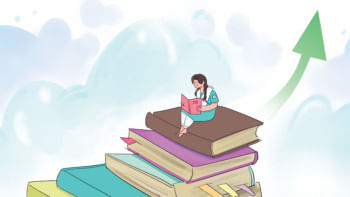

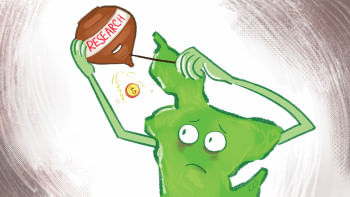


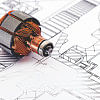
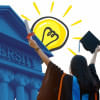
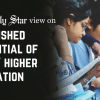




Comments